
@’s by AMULET creator
Kazuhiro Kinuishi!
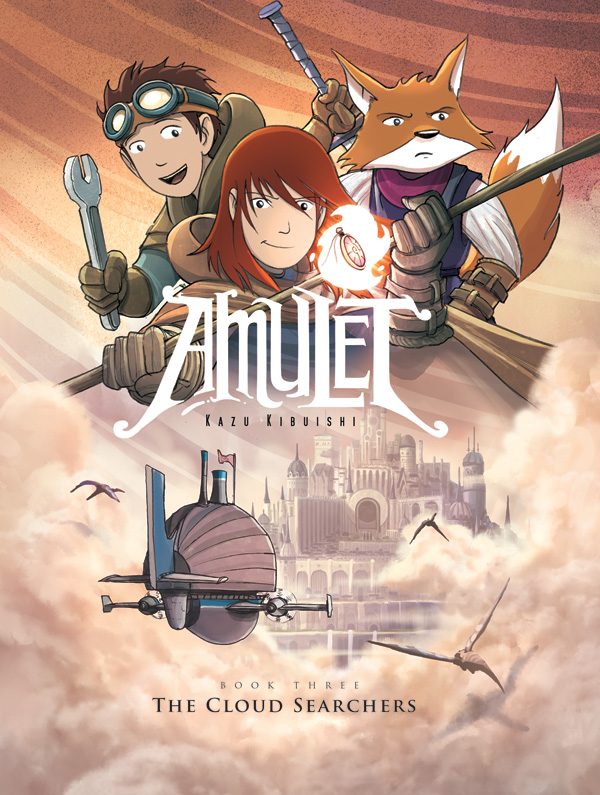 Hello out there in comicbookland! It is I, your faithful sometime comic reviewer, superhero ! Here with an interview with Kazuhiro Kibuishi, the creator of the all ages graphic novel series AMULET and the mastermind behind the highly respected and universally loved FLIGHT anthologies.
Hello out there in comicbookland! It is I, your faithful sometime comic reviewer, superhero ! Here with an interview with Kazuhiro Kibuishi, the creator of the all ages graphic novel series AMULET and the mastermind behind the highly respected and universally loved FLIGHT anthologies.I met Mr. Kibuishi at a recent charity event and found him to be a very interesting guy. Knowing he was a comic book creator who obviously had his act together I just had to ask him for an interview. Let me tell you right now that Kazuhiro is probably one of the nicest comic creators out there. He’s passionate about comics and comic creators and has a genuine love for his fans. He’s a great guy who deserves all of the success he’s been getting. You can check out a lot of his stuff by going to www.boltcity.com.
Or you can just check out this video preview for volume four of AMULET to see just a tad of his genius:
SUPERHERO: So tell us about your work. How would our readership know you? What projects are you working on now?
KAZUHIRO KIBUISHI (KK): I spend most of my time writing and drawing "Amulet", a graphic novel series for Scholastic Graphix. The newest book in the series, "Amulet 4: The Last Council", is due out in September. Along with working on "Amulet", I am also the editor/art director of the "FLIGHT" comics anthology, the writer/illustrator of a graphic novel called "Daisy Kutter", and a webcomic called "Copper". The final volume of "FLIGHT" will be available just before Comic-Con.
SUPERHERO: Why the final volume of Flight? Everyone I know seems to love that book! Why is it ending?
KK: To be honest, the sales of Flight aren't strong enough to continue in the format it is currently in. The book is a little too expensive for being a trade paperback. It costs too much to produce, and therefore we end up having to ask the reader to make a big leap of faith by purchasing a 27 dollar paperback every time a new volume comes out. That said, Flight has been very successful for the type of book that it is.
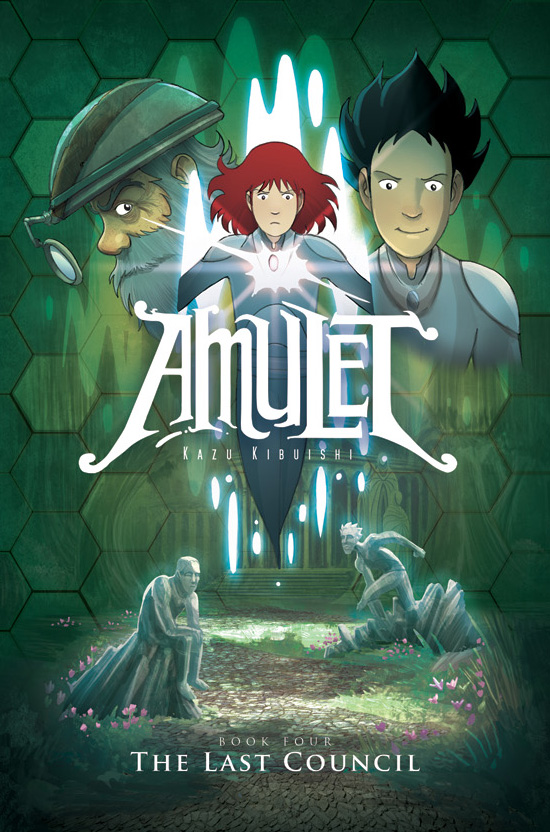 The Flight project will continue, but we're going to have to make some changes to give the project a better chance of succeeding. On that note, we're currently working on a brand new version of Explorer. It's much smaller, which will allow the publisher to offer the book at a more reasonable price point, and the content will be more focused, with each volume's stories working off a central theme.
The Flight project will continue, but we're going to have to make some changes to give the project a better chance of succeeding. On that note, we're currently working on a brand new version of Explorer. It's much smaller, which will allow the publisher to offer the book at a more reasonable price point, and the content will be more focused, with each volume's stories working off a central theme.SUPERHERO: How about some personal info? Where are your from? Where did you go to school? What’s your favorite color, TV show, movie, etc.? If you were a tree what kind of tree would you be?
KK: I was born in Tokyo, Japan, but I have lived in Southern California for most of my life. I went to Woodbridge High School in Irvine, California, and went to college at the University of California, Santa Barbara, where I was a Film Studies major. My favorite color is blue, my favorite show is Dexter, my favorite movie is Akira Kurosawa's Dreams, and if I were a tree, I would probably be a giant redwood in the Yosemite Valley.
SUPERHERO: How did you get into comics? Can you remember what the first comic you ever read was? What is the biggest influence over your work?
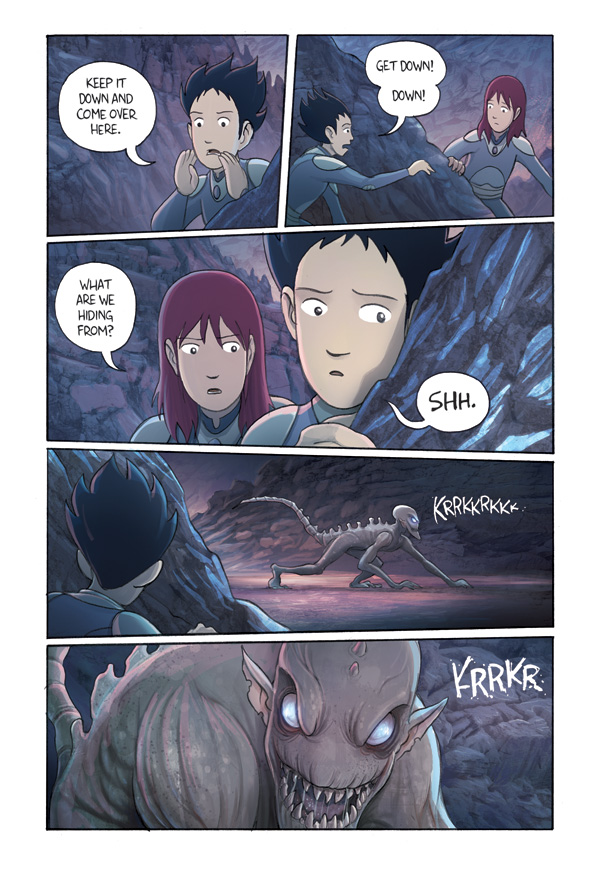 KK: The first comic that I really got into was MAD Magazine, but mostly because I was curious about movies. I was only about 5 years old at the time, and my family rarely watched movies, but I would always hear about them from other kids. So I would pick up an issue of MAD at the grocery store and see a comic spoof of current films and I sort of became obsessed with them. RoboSlop by Mort Drucker is probably the one that sticks in my mind the most. I drew RoboCop the way Drucker did, and as far as I knew, that was the only version of the character that existed. Of course, I ended up seeing the film a couple of years later, and it was kind of mind-blowing to see the "real" thing. I think that ever since those early days, I've always wanted to stay someplace between comics and movies, which is sort of the place I find myself now. So, I think that the biggest influence on my work is the movies that I love, but I originally found them by way of comics.
KK: The first comic that I really got into was MAD Magazine, but mostly because I was curious about movies. I was only about 5 years old at the time, and my family rarely watched movies, but I would always hear about them from other kids. So I would pick up an issue of MAD at the grocery store and see a comic spoof of current films and I sort of became obsessed with them. RoboSlop by Mort Drucker is probably the one that sticks in my mind the most. I drew RoboCop the way Drucker did, and as far as I knew, that was the only version of the character that existed. Of course, I ended up seeing the film a couple of years later, and it was kind of mind-blowing to see the "real" thing. I think that ever since those early days, I've always wanted to stay someplace between comics and movies, which is sort of the place I find myself now. So, I think that the biggest influence on my work is the movies that I love, but I originally found them by way of comics.SUPERHERO: So there's no big Anime or Manga influence? It seems like there would be from looking at your work...
KK: I'm heavily influenced by Hayao Miyazaki's work, but not so much by any other manga or anime. I recently read some One Piece and Naruto, which I enjoyed, and I have put in a few things I learned by looking at the work of Eichiro Oda and Masashi Kishimoto, but the influence is very light. Along with Miyazaki, Jeff Smith has been a tremendous influence, both as a creator and as a role model and friend.
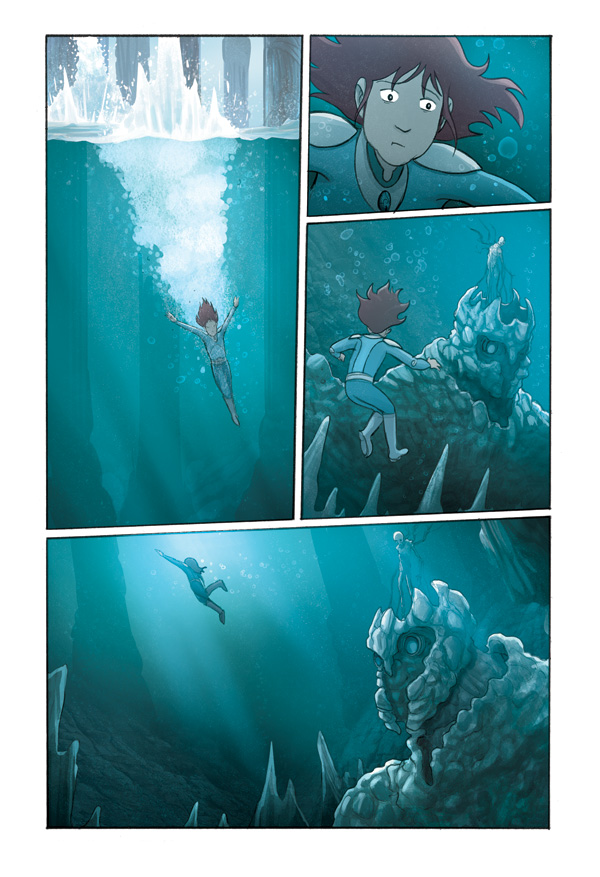 SUPERHERO: Can you tell us a bit about how you work? What tools do you use? How do you approach writing your comics? How do you get from written word to finished page?
SUPERHERO: Can you tell us a bit about how you work? What tools do you use? How do you approach writing your comics? How do you get from written word to finished page?KK: Since the Amulet books are over 200 pages in length, I spend a lot of time writing very simple outlines- no more than two pages long. It often takes over a dozen drafts before a story works. Once I have an outline that reads well, I begin sketching out scenes and dialogue on reams of cheap computer printer paper. I'll jot down anything that comes to mind, and I basically try to push out all the bad ideas, bad drawings, bad dialogue before I begin thumb nailing or penciling the pages. Good stuff eventually appears, and I keep those sheets in a binder. Once I've harvested enough helpful sketches and dialogue sequences, I set those pages in front of me and try to weave them into a sequence of images. This is the thumbnail phase. I draw four pages to a sheet of printer paper, and in order to save time, I do very tight detailed drawings, scan them into the computer, print them out at 9 by 12 inches, and then use the thumbnails as my penciled pages. This allows me to basically skip the penciling stage in the process. I often go straight to the inking phase on my blown-up thumbnail pages. And when I "ink" I actually just use a standard graphite pencil. When scanned into Photoshop and adjusted, the pencil lines can be made to appear as dark as ink lines, and it creates a sort of thin dry brush look that looks nice over the digitally painted panels. Once the inking phase is done, the larger pages get scanned back into the computer and colored digitally.
SUPERHERO: So you don't write out your story/script into a full draft? There's not going to be an AMULET scriptbook?
KK: No full drafts of scripts. Only outlines, sketches and thumbnails. The outlining is probably the most important part of the process. If the outline is strong, then I can just focus on individual scenes when writing dialogue and drawing action.
SUPERHERO: How about the coloring/painting process?Do you color using channels or mostly via layers? Or both?
KK: For coloring, I use layers in Photoshop, and rarely have I messed around with channels.
SUPERHERO: Once you get going on a page how long does it get you to finish one? How many pages are you cranking out say in a day?
KK: It's difficult to know how long a single page takes, since I break up the process into several stages and I never go through all stages all at once on a given page. When I am thumbnailing/penciling, I expect to do about 6-8 pages a day. When inking, I expect to do about 12 pages a day, but I often get over 20 done in a day. When scanning, adjusting, and lettering pages, I can do about 30 in a day. The digital painting, however, takes the most time, and I expect to do about 3-4 pages in a day. I usually have to get people to help with the flatting and the painting of pages so I can focus on redrafting the thumbnails. I generally have to thumbnail a sequence two or three times before it works.
 SUPERHERO: When we met the first time you made a point to let me know that you were not a self-published artist, that you had a publisher and are not publishing your own work independently. But surely you are one of the better success stories of artists that are working outside of the big two (Marvel and DC). How did you establish yourself as such?
SUPERHERO: When we met the first time you made a point to let me know that you were not a self-published artist, that you had a publisher and are not publishing your own work independently. But surely you are one of the better success stories of artists that are working outside of the big two (Marvel and DC). How did you establish yourself as such?KK: Before working in comics, I worked all sorts of jobs, from retail at Target, serving popcorn at a movie theater, graphic design and print production at an architecture firm, and finally working in 3D animation. During this time, I drew my comics wherever anyone would print them. I never got paid to draw the comics I wanted to draw. I rarely drew work-for-hire comics. It was just much more efficient for me to get work as a graphic designer or concept artist, since comics required such an enormous amount of work. My comics were my creative sanctuary- a place I would go to do whatever I wanted to do- so the idea of working full-time for Marvel or DC just seemed really strange to me. My goal was not to be a successful comic artist. My goal has always been to learn to construct stories and communicate them as clearly as possible to a wide audience. And comics offered me a place to learn without any outside pressure. I figured that eventually an audience would see what I was trying to do with these comics and start supporting the effort. Thankfully, it worked, and I am blessed to have an amazing support group in my readers.
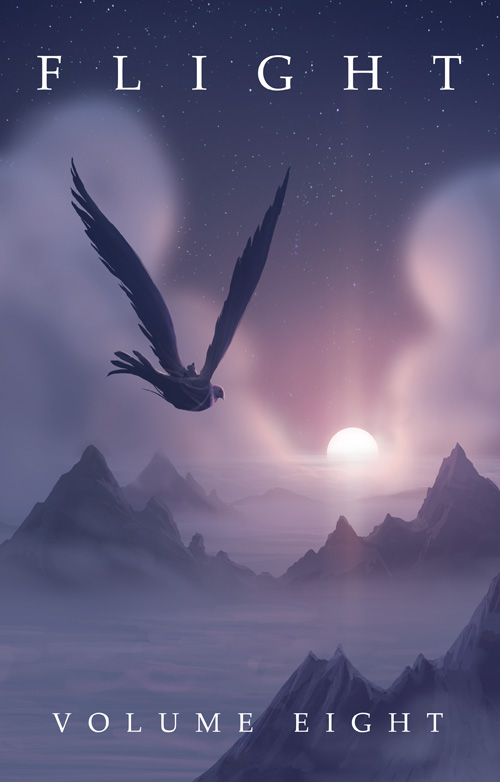 SUPERHERO: But how did you go about securing an editor? I'm assuming you have full creative control over your projects. Was it just that Scholastic just loved your work and said they wanted to give you carte blanche?
SUPERHERO: But how did you go about securing an editor? I'm assuming you have full creative control over your projects. Was it just that Scholastic just loved your work and said they wanted to give you carte blanche?KK: After Daisy Kutter and three volumes of Flight, I put together a pitch package for Amulet that consisted of a synopsis, sketches and six sample pages. My friend Raina Telgemeier saw my pitch pages on my friends-locked livejournal post and let me know that her editor at Scholastic was interested in working with me. She showed them my pitch, and they immediately offered a book deal. I also had another offer from FirstSecond on the table, so I consulted my friend Scott McCloud about what I should do. He gave me his literary agent's phone number, and I gave Judy a call. We hit it off immediately and she agreed to help me out. She was able to get some more serious interest at another big publishing house and Scholastic ended up winning the book series in a bidding war. This was good, because I feel Scholastic was the right home for Amulet.
 As for creative control, most book editors are used to picking up manuscripts that are complete and polishing the material for publication, so they don't tend to get in the way of creators while they work. On Amulet, the editors have been great at helping me stay on schedule, polish the material and giving notes from a reader's perspective, but overall they just try to be encouraging and put a lot of trust in me. It took a while for us to form this working relationship, though. On book one, I ended up taking every single note from my editor to heart and then I got lost, and ended up redrafting the book several times. This was my own fault, because I doubted myself. I needed to remember that I am the expert of my own story, and that I needed to trust my own instincts to get the book done. The way it works now, we keep our communications very short and simple, to avoid casting unnecessary doubts during the production.
As for creative control, most book editors are used to picking up manuscripts that are complete and polishing the material for publication, so they don't tend to get in the way of creators while they work. On Amulet, the editors have been great at helping me stay on schedule, polish the material and giving notes from a reader's perspective, but overall they just try to be encouraging and put a lot of trust in me. It took a while for us to form this working relationship, though. On book one, I ended up taking every single note from my editor to heart and then I got lost, and ended up redrafting the book several times. This was my own fault, because I doubted myself. I needed to remember that I am the expert of my own story, and that I needed to trust my own instincts to get the book done. The way it works now, we keep our communications very short and simple, to avoid casting unnecessary doubts during the production.SUPERHERO: Do you have any advice for any fledgling comic artists out there?
KK: Put less pressure on financial or critical success, and more time and effort in learning and creating. With enough time and energy invested in anything you do, you will find some sort of reward down the line, and often in the most unexpected forms. Also, it's very important to remain focused, and to finish the projects that you start. Energy and focus will beat talent in the long run. The ability to stick with something and not give up is probably one of the most valuable traits an artist can have.
 SUPERHERO: What are your opinions on print comics vs. webcomics? Can they co-exist or will one cannibalize the other? Can they be friends?
SUPERHERO: What are your opinions on print comics vs. webcomics? Can they co-exist or will one cannibalize the other? Can they be friends?KK: My webcomics brought my work to the attention of publishers and other artists, but I make my entire living creating comics for print. My life and career requires for them to be able to co-exist. So yes, I do believe they can be good friends.
SUPERHERO: But do you see a webcomic as being mostly a promotional tool?
KK: I think if you have good content and a good business sense, you can make any model work. Webcomics don't necessarily have to be a promotional tool, but you'd have to be very savvy to get customers to pay for content in a browser, because they currently don't expect to.
SUPERHERO: You make your living off of graphic novel sales. But are you afraid that that revenue may dry up with so many people panicking to move to digital?
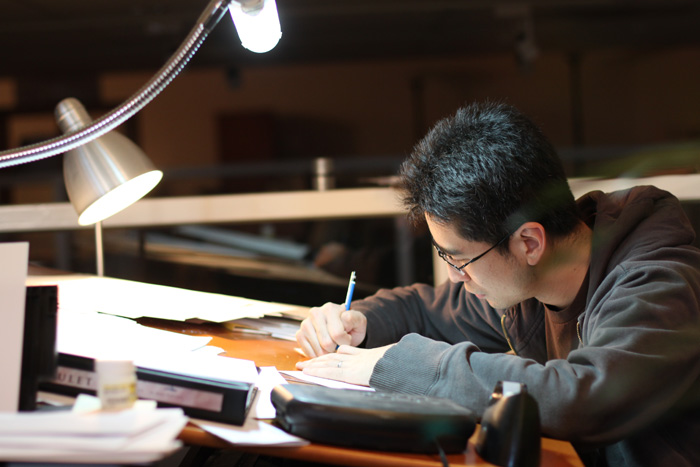 KK: No, I'm not worried. We're currently working on a lot of content for digital and it's really exciting. Print won't go away any time soon, but I do think we'll be going predominantly digital in the near future.
KK: No, I'm not worried. We're currently working on a lot of content for digital and it's really exciting. Print won't go away any time soon, but I do think we'll be going predominantly digital in the near future.SUPERHERO: What comics are your reading these days? Who are some of the other creators you are keeping an eye on?
KK: The best books I've read recently include "Walker Bean" by Aaron Renier, "Koko Be Good" by Jen Wang, and "Anya's Ghost" by Vera Brosgol. These are all really great books coming out of FirstSecond Publishing. Shaun Tan, Jarrett Krosoczka, Raina Telgemeier, Dan Santat, and Doug Tennnapel are all creating some really excellent graphic novels for young readers, many of them being published at Scholastic. My hero Jeff Smith is also creating some great stuff with his new series RASL. As for new creators I'm keeping my eye on, I would say Emily Carroll, Kyla Vanderklugt, and Kostas Kiriakakis are three of the most promising young artists I've seen recently, and they are currently doing amazing work for FLIGHT and our new anthology EXPLORER.
SUPERHERO: What future plans do you have? Any more projects coming down the pike? Any news you’d like to share with the world out there?
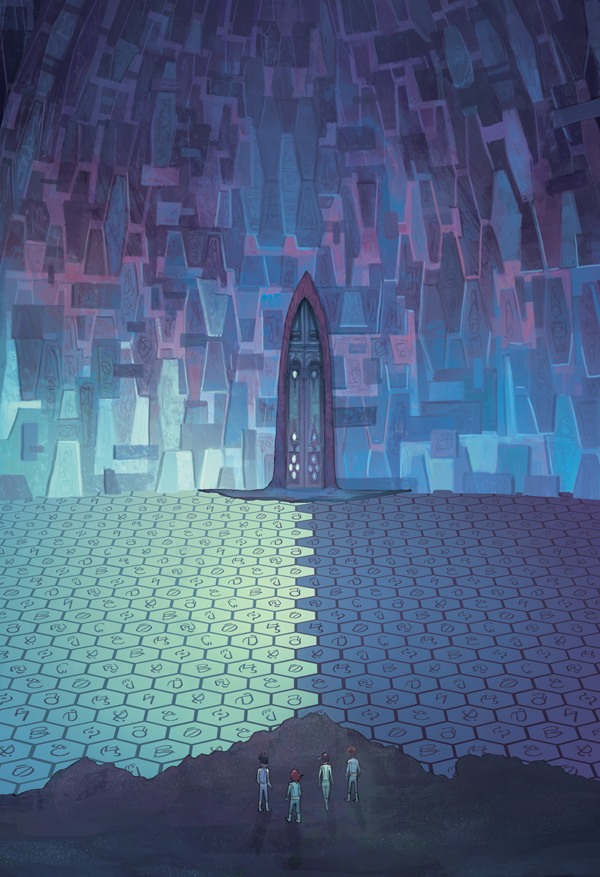 KK: We do have some really neat things cooking at the studio. We're just about finished with the new EXPLORER anthology for Abrams ComicArts, and we're working on digital versions of our books. In fact, I've been working with my friend Gordon Luk, a game designer and programmer, on various interactive projects involving our books, including Daisy Kutter. I'll talk more about these projects when we're further into production, but we should have preview material at Comic-Con. I also recently turned in a draft of the treatment for the Amulet movie to Overbrook Entertainment. Not entirely sure where the film is at right now, but hopefully things pick up on that project over the next few months.
KK: We do have some really neat things cooking at the studio. We're just about finished with the new EXPLORER anthology for Abrams ComicArts, and we're working on digital versions of our books. In fact, I've been working with my friend Gordon Luk, a game designer and programmer, on various interactive projects involving our books, including Daisy Kutter. I'll talk more about these projects when we're further into production, but we should have preview material at Comic-Con. I also recently turned in a draft of the treatment for the Amulet movie to Overbrook Entertainment. Not entirely sure where the film is at right now, but hopefully things pick up on that project over the next few months.SUPERHERO: Yes! More Daisy Kutter! An AMULET movie? Who's involved in that? Anyone recognizable?
KK: Overbrook Entertainment was formed by Will and Jada Pinkett Smith, along with Ken Stovitz. They will be producing the film, and as things stand right now, Willow and Jaden Smith will be playing the leads. I had a lot of fun working on the story of the film, which is a combination of events from the first two books and an outline that Will Smith wrote early in the development cycle.
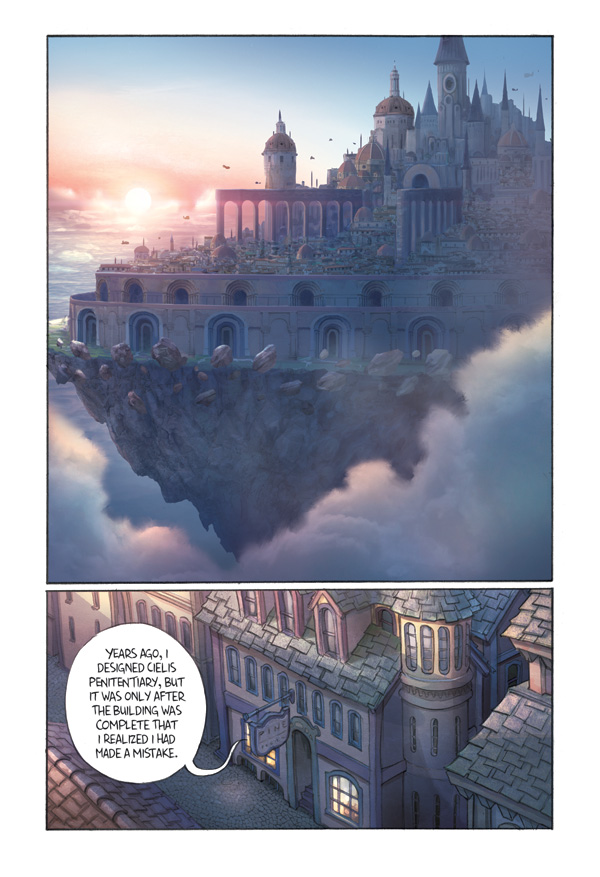 SUPERHERO: Will the movie be live action or be animated?
SUPERHERO: Will the movie be live action or be animated?KK: The movie will be live-action. At least according to the current plan.
SUPERHERO: If EXPLORER is an anthology how is it different from FLIGHT?
KK: EXPLORER is a more focused book. It is clearly all-ages, each volume will have a central theme, we have a very hands-on editor working with us at Abrams ComicArts, and the book will be very affordable.
SUPERHERO: Why end FLIGHT (a recognized name) and start something new?
KK: EXPLORER began with the all-ages FLIGHT off-shoot, FLIGHT EXPLORER. When we talked to Villard about doing a second volume of FLIGHT EXPLORER, they weren't interested, so we were allowed to shop it around to other publishers. At the time, I believed we would be producing both anthologies concurrently. FLIGHT was going to push farther into more mature topics, and EXPLORER was going to be for younger readers. Unfortunately, FLIGHT had to come to an end, but the silver lining is that we will have more time to devote to getting EXPLORER done right. And now, EXPLORER will pick up where FLIGHT left off.
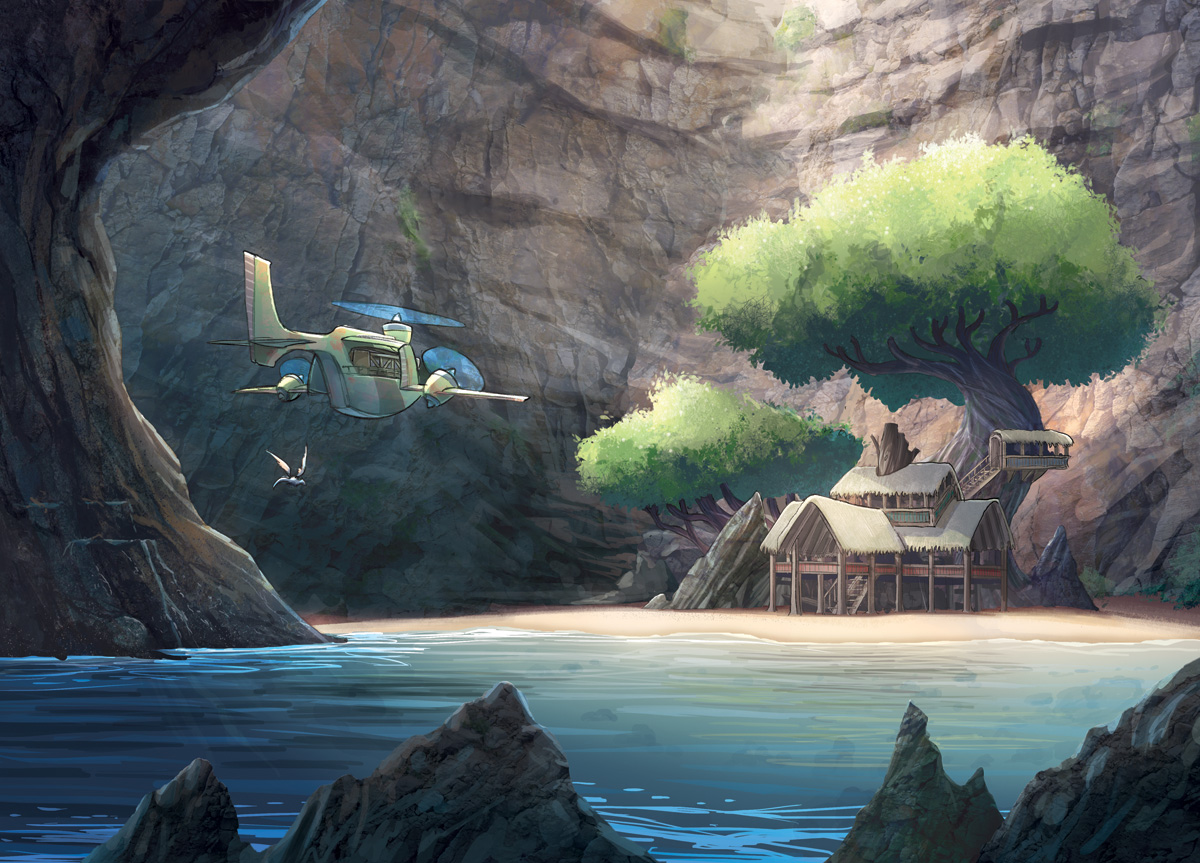 SUPERHERO: Any personal appearances you’ll be making? Will you be at Comic-Con this year?
SUPERHERO: Any personal appearances you’ll be making? Will you be at Comic-Con this year?KK: I'll be at Comic-Con at the FLIGHT booth (#2235), sketching and signing for the readers, and I'll be joined by a large number of Flight artists who are making the trek to San Diego to celebrate the end of the anthology's eight-volume run. Other events include an Amulet 4 book release event at the Schulz Museum in Santa Rosa, CA the first weekend in September. I'll be sure to keep people posted on upcoming events on my blog and twitter account (@boltcity).
SUPERHERO: Well that’s about it! Be sure to check out AMULET VOLUME FOUR when it comes out in Septemeber and the final (Boo!) volume of FLIGHT which may be out already by the time this interview is out. Special thanks to Mr. Kibuishi for taking the time to have this little chat.
Lastly, I just want to say that I’d never read AMULET before doing this interview. I ended up buying the first volume and my daughter made me read it to her from beginning to end in one sitting! Seriously, she loved it and I had to buy the next volumes practically the next day to satiate her need for AMULET goodness! These are great books! Pick them up for yourselves or for your kids if you haven’t already!
Discovered as a babe in an abandoned comic book storage box and bitten by a radioactive comic fan when he was a teenager, superhero is actually not-so mild mannered sometime designer & cartoonist, Kristian Horn of Los Angeles, California. He's been an @$$hole for three years. Some of his work can be seen at www.kristianhorn.com and check out his blog at www.parttimefanboy.com.
Proofs, co-edits & common sense provided by Sleazy G
